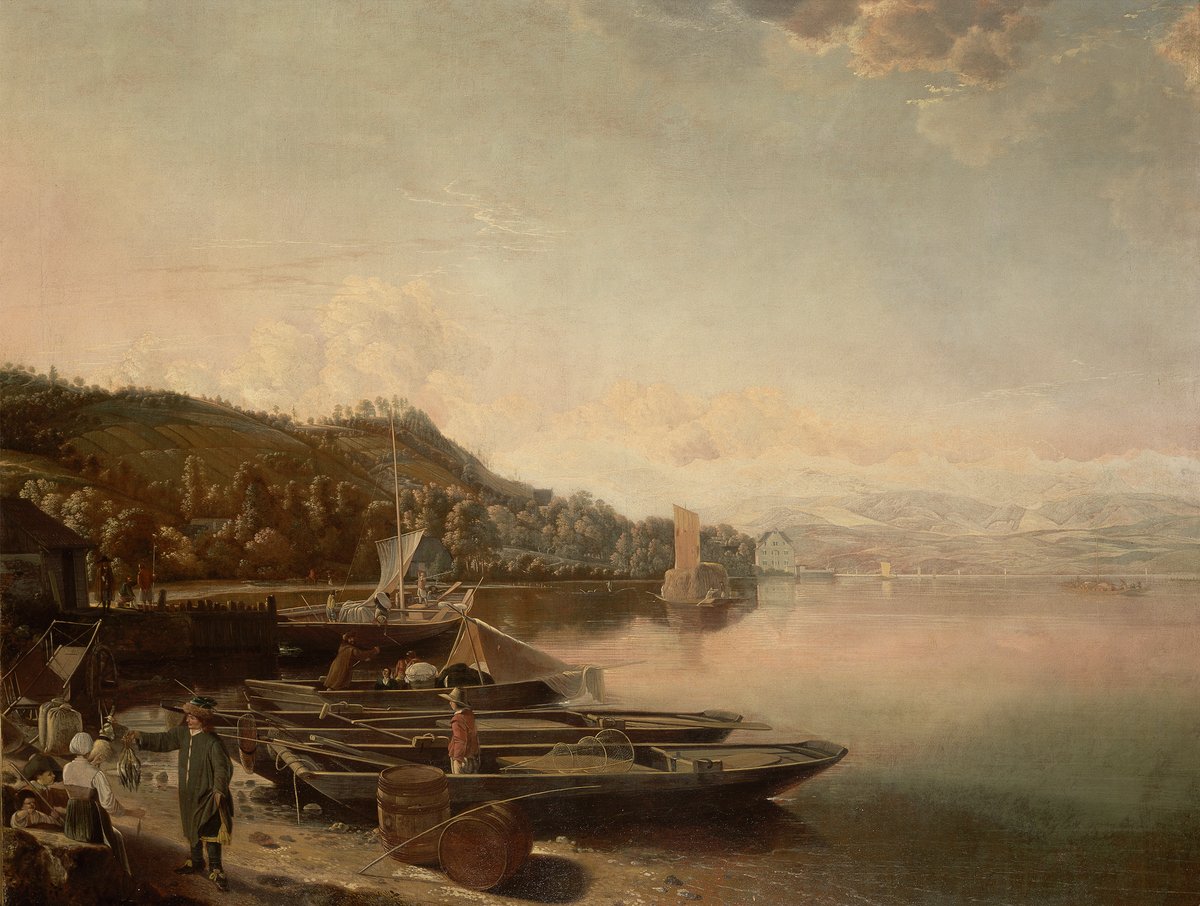Schipf at Herrliberg

Conrad Meyer
Ansicht der Schipf in Herrliberg, vom Winkel in Erlenbach aus
Öl auf Leinwand, 116 x 149 cm, Privatbesitz
In this magnificent painting, Meyer shows the Schipf in Herrliberg, the estate of his patron Hans Georg Werdmüller (1616–1678), which fell to Werdmüller in 1638 as part of an inheritance. From the Winkel site in Erlenbach, one looks across the small bay to the Schipf in Herrliberg. The light suggests the morning atmosphere of a summer's day. In the foreground, fishing boats are moored on the shore and a merchant offers a bundle of birds for sale to a woman with a distaff.
The motif – the summer house of a patron – suggests that this could be a commission from Hans Georg Werdmüller. Werdmüller was an important patron of Conrad Meyer and of the arts in Zurich in general. Professionally, he was a field engineer and military engineer; among other things, he planned the Sconce in Zurich, a gigantic large-scale project that took three decades to build.
Conrad Meyer was Werdmüller's "house artist", so to speak, and it was also Werdmüller who hosted the Dutch painter Jan Hackaert, with whom Conrad Meyer undertook his Alpine journey. In Meyer's large drawing of the Löntsch Valley, we see another young draughtsman alongside the Dutchman. This is the son of the patron, who was apprenticed to Meyer and whom they had obviously taken with them to the mountains.

Conrad Meyer
Johann Rudolf Werdmüller mit 40 Jahren, 1654
Schwarze Kreide, weiss gehöht, 21,6 x 18,8 cm, Zentralbibliothek Zürich, Graphische Sammlung
The Werdmüllers
The relationship between the Werdmüller and Meyer families spanned several generations. Conrad's father already painted portraits of members of the Werdmüller family, who were of national importance in textile manufacturing and trade. In the course of the 17th century, their activities increasingly shifted from business to politics and the military. However, the patronage tradition remained intact, especially the promotion of painting. They set up a picture room in the Alter Seidenhof, with a steadily growing collection of works by masters such as Hans Holbein and Claude Lorrain that was renowned beyond Zurich's borders.
Unfortunately, no portrait of Hans Georg Werdmüller has survived, but there is a beautiful portrait drawing of his brother Johann Rudolf, who was an officer.


